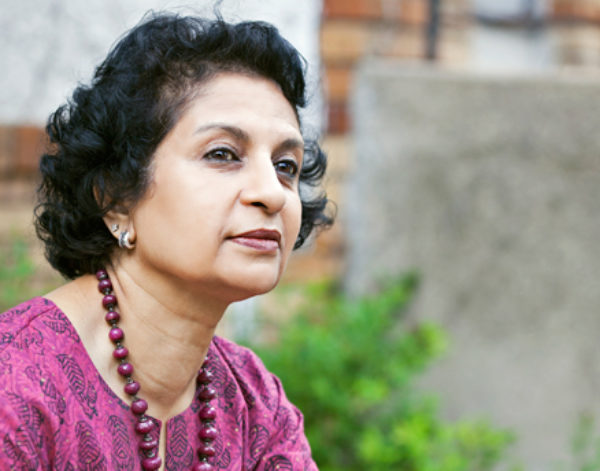
Ashwini Ramaswamy performs a solo during the Northern Spark Festival in Minneapolis, Minnesota. Image by Courtney Perry.
Between the Ancestral and the Contemporary: Tagore Paves the Way
Growing up in India, I was always aware that Rabindranath Tagore was profoundly linked with cultural life. Among many things he was a poet and a singer, a visual artist and a nationalist; and, while we are from different regions of India, his influence is deeply felt throughout the country. My favorite Tagore saying is one that parallels the work my daughter Aparna and I create through our company, Ragamala Dance:
“There are some who are insularly modern, who believe that the past is the bankrupt time, leaving no assets for us, but only a legacy of debts… It is well to remind them that the great ages of the renaissance in history were when those men suddenly discovered the seeds of thought in the granary of the past. The unfortunate people, who have lost the harvest of the past, have lost their present age.”

As dancemakers, Aparna and I explore the dynamic tension between the ancestral and the contemporary — each bringing our generational experiences to our work. The rich traditions, deep philosophical knowledge, and ancient wisdom of south India meet and merge with the curiosity, openness, and creative freedom that we experience as Americans. Like Tagore, we believe that we must reflect upon the past to fully realize the power of the present.
While India is an old culture, it continues to live in the present. Hundreds of millions of people continue to practice and shape its traditions and art forms. Spirituality and faith are integral to Indian life, and are fundamental to our creative work as well. There is a feeling that is born of spirituality and devotion (I am not referring to a religious feeling but a spiritual, divine feeling that connects us all) that can also be achieved through art. For us, art is not just for mere entertainment, nor is it political or about singular individuals. Art is bigger than us; we are a vehicle through which to personalize, internalize, and convey a visceral experience. We want to make audiences feel something deeply and completely — to somehow change their humanity through our art.

Tagore understood the vitality and connectivity of art; he made it a personal mission to bring art to the masses. At a time when tradition, orthodox beliefs, and strict adherence to rigid rules was the norm, he made huge changes in the way the common people in India could participate and enjoy classical art forms. He changed the mindset of a nation.
We are continually inspired by his greatness to speak with our classical forms and create meaningful experiences for a global audience. Pioneering thinkers like Tagore have paved the way for people of all walks of life to enjoy, understand, and feel art forms that they might never have come across before. We are honored to continue his beautiful mission.
Aparna and I had the privilege of performing this poem, read live by the great writer Robert Bly, in 1998:
Dusk
by Rabindranath Tagore, from “Gitanjali”
translated by Robert BlyDusk is here. Darkness starts to come up from the bushes
and the shrubs. I am going to take a walk down to the river.
How marvelous the sound of running water in the near
dark! I heard it a quarter mile away…at the river, solitude,
no one around, no one has come to fish, there is some wind,
small waves gallop on the light plain.
I don’t know if I’ll go back home tonight or not. I have the
feeling I’m going to meet someone. And sure enough, where
the footpath crosses the river, there is a boat. Floating in the
boat is a person whom I’ve never seen, playing the flute.

